Pierre Adler
Jean Robert Alexis
Katelyn Alexis
Ti Angelo
Kebert Bastien
Getho Jean Baptiste
LéO
Wesner Bazile
Bertho Jean-Pierre
Mackenson Bijou
Jephthe Carmil
Rossi Jacques Casimir
Dieuvela Cherestal
Jerry Reginald Chery aka Twoket
James Desiris
Ronaldo Duborgne
Noel Edgard aka Papoche
Patrick Elie aka Kombatan
Muscadin Fritzgerald
Jean Frederic aka Wabba Upking
Londel Innocent
Charles Jerry
Louis Kervans
Michel Lafleur
Cynthia Maignan
Sophonie Maignan
Aristide Michelet
Aurelien Moliere
Mimétik Nèg
Olwitchneider Sainclair
Jean-Claude Saintilus
Reginald Senatus
Steevens Simeon
Wilerme Tegenis
Ti Moun Rezistans
Samba Yonel
ARGENTINA
Cecilia Lisa Eliceche
Guillermina De Ferrari
BAHAMAS
Keisha Oliver
BELGIUM
Tom Bogaert
BRAZIL
Ze Kielwagen
Leandro Nerefuh
Marcos Serafim
COLOMBIA
Fabien Clerc
CUBA
Reynier Leyva Novo
DENMARK
Jean-Louis Huhta
DOMINICAN REPUBLIC
Engel Leonardo
Eliazar Ortiz
Yina Jiménez Suriel
FRANCE
Jephthe Carmil
Olivier Marboeuf
Pierre Valls
HUNGARY
Piroska É. Kiss
ITALY
Camilla Boemio
JAMAICA
DJ Afifa aka Afifa Nzinga Badiliko
KUWAIT
Alia Farid
MEXICO
Aldo Alvareztostado
Diego De La Cruz Gaitán
PUERTO RICO
Ramón Miranda Beltrán
Diego De La Cruz Gaitán
Alia Farid
Pablo Guardiola
Gabriel Maldonado
Beatriz Santiago Munoz
Tony Cruz Pabón
Humberto Figueroa Torres
SPAIN
Elena Montesinos
SWEDEN
Nandy Cabrera
Jean-Louis Huhta
Per Huttner
Carima Neusser
Olav Westphalen
SWITZERLAND
Fabien Clerc
Elena Montesinos
Federic Post | Mos Espa
TRINIDAD & TOBAGO
Kwynn Simone Johnson
UNITED KINGDOM
Jaime Gili
Louis Henderson
Keisha Oliver
UNITED STATES
Tom Bogaert
Gina Cunningham
Jacques Duffourc
Sorrah ET
Catherine Feliz
Guillermina De Ferrari
Laura Heyman
Ze Kielwagen
Lee Lee
Mimi Sheller
Marcos Serafim
Reuben Telushkin
Whitney Raynor
Moira Williams
URUGUAY
Nandy Cabrera
VENEZUALA
Jaime Gili
Pierre Adler (HT)
CHRONICLES OF THE VOICELESS | LA CHORONIQUE DES SANS VOIX
This film will explore the theme of ‘Payi Lok’ (locked down country.) The Haitian people are under the aegis of a poorly elected but corrupt president who refuses to take responsibility. This film emphasizes the difficulty to circulate in the cities, one remains cloister at home. The socio-political situation is palpable, because for two months the doors of public and private institutions are unable to function. No one can go about their routine activities, on the other hand, there is a galloping inflation of the dollar against the gourd in just a year. The left-out-accounts are rife in the black misery, their rights are swallowed, this film denounces the mediocrity of the head of state the non-responsibility of the duty in front of his people.
En traitant la thématique du "Pays Lock" Le peuple haïtien est sous l'égide d'un président mal élu, mais bien corrompu, qui refuse de prendre ses responsabilités. Ce film souligne la difficulté à circuler dans les villes, on reste cloîtrer chez soi. La situation socio-politique est palpable, car depuis deux mois les portes des institutions publiques et privées sont forcées de s'entr'ouvrir. Personne peut vaquer à ses activités routinières, par ailleurs, on assiste à une inflation galopante du dollar face à la gourde en seulement d'une année. Les laissé- pour-comptes sévissent dans la misère noire, leurs droits sont avalés, ce film dénonce la médiocratie des chef de l'état la non-responsabilité du devoir face à son peuple.
Back to artist list
DJ Afifa aka Afifa Nzinga Badiliko (JM) & Reuben Telushkin (US)
ALL-STAR COMMUNITY RADIO AND SOUND SYSTEM
There are many lessons we can learn from Haiti and the Haitian revolution. If we choose to use the revolution as a guiding principle for our lives we cannot see the revolution as ending in 1804 with the creation of the first black republic in the Western Hemisphere, we must see this as the beginning of our journey towards preserving our African culture and history, reclaiming our humanity and determining our future.
What will it take for us to continue to preserve our African culture, our humanity and determine our future? Each generation must answer these questions in the face of a reality which is becoming increasingly complex. As one response to the complexity we have harnessed our creative energies. We have used our creativity to connect to the wisdom of our ancestors and continue traditions and practices which have been key to our existence before we were brought here to the “West”. We have demonstrated that the revolution lives in our creative practice around music.
In this installation we propose to revisit this idea and explore its relevance in current Ayati, 215 years since the beginning of the revolution.
At the center of our exploration is Sofalo Radio a broadcast platform and community sound system where life is inspired by music.
Back to artist list
Jean Robert Alexis (HT)
BWA CAYMAN
Dans la révolution haïtienne il y avait plusieurs ingrédients, par exemple le marronnage, l’assassinat, la cérémonie du bois caïman pour ne citer que ceux-là.
Lors de la cérémonie du bois caïman, les esclaves a été vêtir sous l’ordre de Ogou Feray qui est l’esprit de la guerre, après les prières de Bookman le prête de la cérémonie. La manbo EdaÏse s’apprêtait à sacrifier un cochon à l’esprit de la guerre Ogou feray, un des esclave présent Jean Baptiste Vixamar le Grand, soudainement possédé par un esprit couleuvre dont le nom est Damballah. Il a saisi le couteau que tenait Edaïse et se coupa les veines des deux coudes. L’esprit qui parlait à travers jean Baptiste vixamar G. invita les esclaves à boire son sang afin d’avoir le courage de vivre libre ou de mourir en essayant. Ainsi tous les esclaves se mirent à genoux et burent le sang de jean Baptiste vixamar le chaste nègre, gonfle à bloc et portes par la trinité Ogou Feray, Damballah, et Erzulie Dantor. Après cette cérémonie tout le monde étaient prêtent à se Battre pour la liberté des noirs à St-Domingue et arriver jusqu’à l’indépendance d’Haïti.
A l’heure actuel en Haïti nous avons besoin d’autres formes de cérémonie sous n’importe qu’elle forme que ce soit pour nous libérer a nouveau des griffes des tyrans d’autrefois et ceux d’actuels.
C’est pourquoi je vais présenter mon travail par une installation inspirer par l’un des piliers de la révolution qui est la cérémonie du bois caïman, parce que le système que nous avions renversé autrefois est de retour depuis des temps sous des autres formes aujourd’hui pour nous frapper par la misère, le chômage, la corruption, l’exclusion social, l’insécurité etc.
Lors de la cérémonie du bois caïman tous les esclaves avaient le même droit, ils ont bu le même sang, de nos jours Haïti est dans un système d’esclavage mais moderne, qui met le pays en retard, c’est pour cela la révolution haïtienne est inévitable.
In the Haitian revolution there were several ingredients, for example, marronage, assassination, and the caiman wood ceremony, to name but a few.
At the Bwa Cayman ceremony, the slaves were clad under the command of Ogou Feray who is the spirit of the war, after Bookman's prayers lending him the ceremony. The Edaïa manbo was preparing to sacrifice a pig to the spirit of the war Ogou Feray, one of the present slave Jean Jean Baptiste Vixamar le Grand, suddenly possessed by a spirit snake whose name is Damballah. He grabbed Edaïse's knife and cut the veins of both elbows. The spirit who spoke through Jean Baptiste Vixamar le Grand invited the slaves to drink his blood in order to have the courage to live free or die trying. So all the slaves went down on their knees and drank the blood of John the Baptist the chaste negro, swelling to the block and gates by the trinity Ogou Feray, Damballah, and Erzulie Dantor. After this ceremony everyone was ready to fight for the freedom of the blacks in Santo Domingo and arrive until the independence of Haiti.
At the present time in Haiti we need other forms of ceremony in any form whatsoever to free us again from the claws of the tyrants of the past and those of today.
That's why I'm going to present my work by an inspiring installation by one of the pillars of the revolution that is the bwa cayman ceremony, because the system we had flipped over sometime is back since times in other forms today. to hit us with misery, unemployment, corruption, social exclusion, insecurity, etc.
At the Bwa Cayman ceremony all the slaves had the same right, they drank the same blood, nowadays Haiti is in a system of slavery but modern, which puts the country late, that's why the revolution Haitian is inevitable.
Back to artist list
Katelyn Alexis (HT)
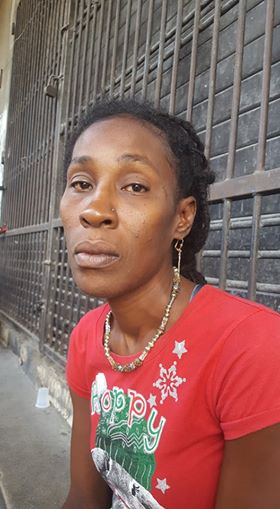
FANM SE POTO MITAN
Fanm se poto mitan fanm gen plas yo al kote lap prezante yon evre nan no Katrine Flon
To respect that women are the central pillars of Haitian society Katelyne will make a work in the name of the creator of the Haitian flag, Catherine Flon.
Back to artist list
Aldo Alvareztostado (MX)
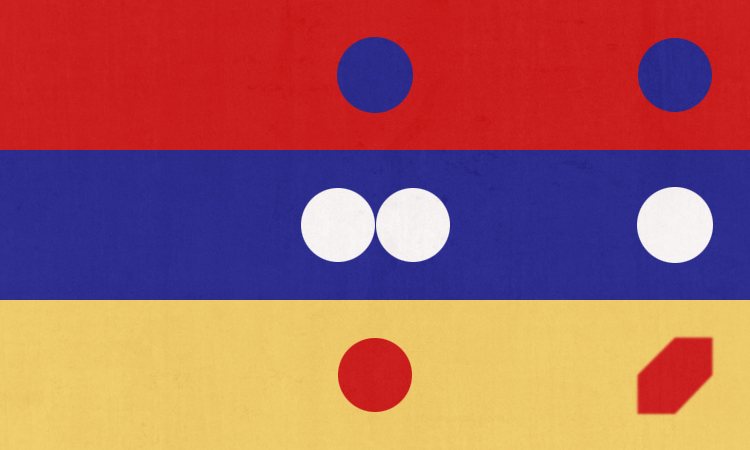
TOPONYMY
Toponymy is an immediate response to a political order: while primeval toponyms usually responded to a description of landscape, throughout time the way we name places has shifted to satisfy religious, political and more recently, market interests. In analyzing toponymy we not only find about the structures of power that shape human geography, but also about local cosmogony and verbal sensitivity. The project consists on identifying and meditating about the relationship between colonialism, Revolution and Haitian toponymy; aiming to materialize these interpretations through site-specific locally crafted objects, having banners, flags and street signs as tentative formats.
Back to artist list
LéO (HT), Mackenson Bijou (HT), Jephthe Carmil (HT/FR), Rossi Jacques Casimir (HT), Dieuvela Cherestal (HT), James Desiris (HT), Louis Henderson (UK/DE), Cynthia Maignan (HT), Sophonie Maignan (HT), Olivier Marboeuf (FR) & Mimétik Nèg (HT)
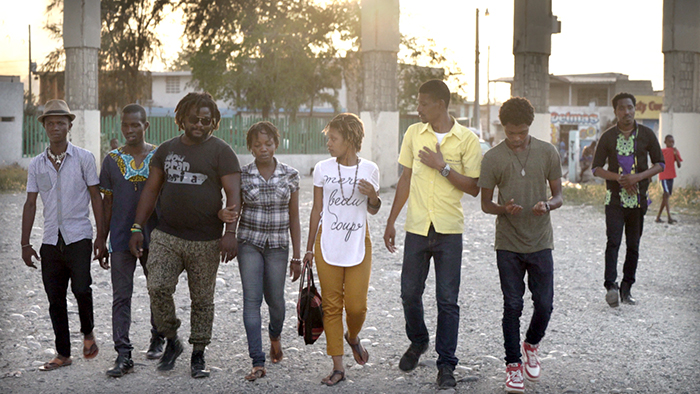
THE LIVING AND THE DEAD ENSEMBLE
Following on from our involvement with the Bienniale in 2017, we plan to come back to work on a series of workshops, performance events, a panel discussion and a screening of the film that documents the work we made in 2017; Ouvertures.
Ouvertures looks into the contemporary relevance of the Haitian Revolution through a translation and performance of the play Monsieur Toussaint by Édouard Glissant. The film’s narrative discards the play and is taken over by the lives and dreams of the group of young actors who are doing rehearsals in Port-au-Prince. For the Biennale 2019 we would like to come back and work on similar themes, the persistence and pertinence of reanimating the history of the Haitian Revolution through discussions that pick out the complexities and varied relations of the Revolution to the present and new political struggles. We are interested to engage discussions around the Petwo Karibe movement for example and the recent protests in Port-au-Prince.
Back to artist list
Kebert Bastien (TT) & Nandy Cabrera (SE/UY)
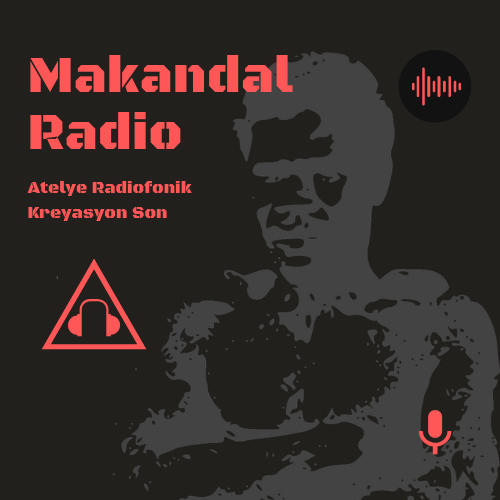
MAKANDAL RADIO
Makandal Radio is a sonic collaboration between Uruguayan sound designer Nandy Cabrera and Haitian musician and activist Kebert Bastien. MR involves the creation of a sonic platform to disseminate bits of information, references to historic revolutionary characters and narratives,channeled through the voice of narrator Kebert Bastien, and the sound recording and electronic sound design and music of Nandy Cabrera.
MR is an in-situ sound-oriented radiophonic project hands-on site-specific workshop. A contemporary take on the historic events of the Haitian revolution told through voices, characters and situations that preceded, led to it, and followed until today. One of the starting points will be the selection and use of fragments of the novel The Kingdom of This World by Cuban author Alejo Carpentier read in Kreyol by different voices. The name of the project is a tribute to Haitian revolution visionary Franswa Makandal.
A radiophonic workshop where technology and memory meet activism in sound. Gather field recordings, voices and raw elements thru soundwalks and meeting musicians, poets, workers, artists and religious figures will be one the key components of our field work. Nandy Cabrera will bring his computer, condenser mic, audio interface as well as other portable devices and recorders.The exhibition strategy is to broadcast the results in the streets, on moving devices such as small speakers, cars or local sound systems. The content will be simultaneously made available online thru the use of hashtags and links #makandalradio #ghettobiennale on social media in order for it to go viral.
Back to artist list
Camilla Boemio (IT)
APHASIA OF DOUBT
Camilla Boemio will lecture on the topic of revolution: APHASIA OF DOUBT
Back to artist list
Tom Bogaert (BE/US) & Michel Lafleur (HT)
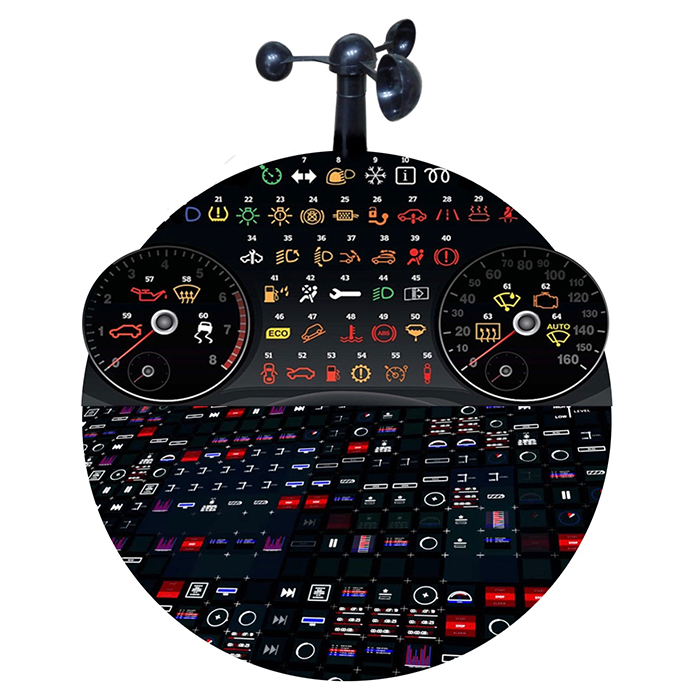
RPM
RPM stands for revolutions per minute, and it is used as a measure of how fast any machine is operating at a given time. A tachometer (revolution-counter, tach, rev-counter, RPM gauge) is an instrument measuring the revolutions per minute of a shaft or disk, as in a motor or other machine.
For the 6th Ghetto Biennale Lafleur & Bogaert will build a tachometer to measure the number of (counter) revolutions Haiti has known since the Slaves Revolt of 1791-1804. For this they will use second-hand tachometers bought in the neighborhood of Grand Rue. Lafleur & Bogaert will present their revolution counter on a dashboard with corresponding symbols that represent the stories behind the revolutions.
Michel Lafleur (Haiti) and Tom Bogaert (Belgium/USA) are two artists who work together as the collaborative art duo Lafleur & Bogaert. They began creating art together in 2013 when they met at the 3rd Ghetto Biennale. In December 2018, Lafleur & Bogaert presented a number of sculptural mobile pharmacies at Pulse Art Fair in Miami Beach, FL and most recently they were awarded first prize at BWAC in Brooklyn, NY by juror Ylinka Barotto, curator at the Guggenheim.
Back to artist list
Jerry Reginald Chery aka Twoket (HT) & Londel Innocent (HT)
REVOLISYON ESKLAV | SLAVES REVOLT
Nou rele pwojè a revolisyon esklav nap abiye de moun koulè nwa nap mete chèn nan pye yo epi nap abiye 2 moun koulè wouj moun wouj yo ap reprezante kolon epi nap abiye yn fi avek yn drapo lap koud fi sa ap reprezante Catherine Flon.
We call this project slaves revolt. We are dressing two black people with chains at their feet and we are dressing two other people in red and they represent the colonialists. We will dress a young woman and she will be sewing the Haitian flag and this girl will represent Catherine Flon.
Back to artist list
Fabien Clerc (CO/CH)

KOUPE TÊT & BOULE KAY
Producing an ensemble of plates and dishwashers made of porcelaine and designed with this keywords: in heritage / armory / blazon using symbolic representation of Glory/important moment/people of the Haitian revolution creating a powerful dichotomy between the luxury of the materials and the reality of the ground (presentation and installation in the quartier Grand Rue) I will use the technique of painting or print on porcelain.
Back to artist list
Gina Cunningham (US)
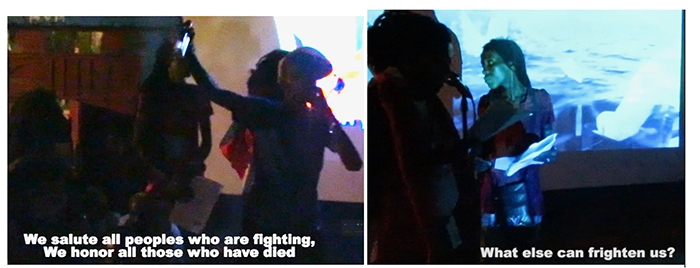
THE EMPRESS | THE REVOLUTIONARY
A two-fold project to increase collaboration with Haitian women artists.
Creating a tribute to Marie-Claire Heureuse Félicité Bonheur, Empress of Haiti.
Described as kind, merciful and elegant; she showed indiscriminate kindness to people of all colors. Also exhibiting a video of the Ghetto Biennale tribute for writer Moriso Lewa & protest singer Manno Charlemagne, one of the most revolutionary influences on modern-day Haitians.
Back to artist list
Tony Cruz Pabón (PR), Engel Leonardo (DO), Gabriel Maldonado (PR), Diego De La Cruz Gaitán (PR), Pablo Guardiola (PR) & Ramón Miranda Beltrán (PR)
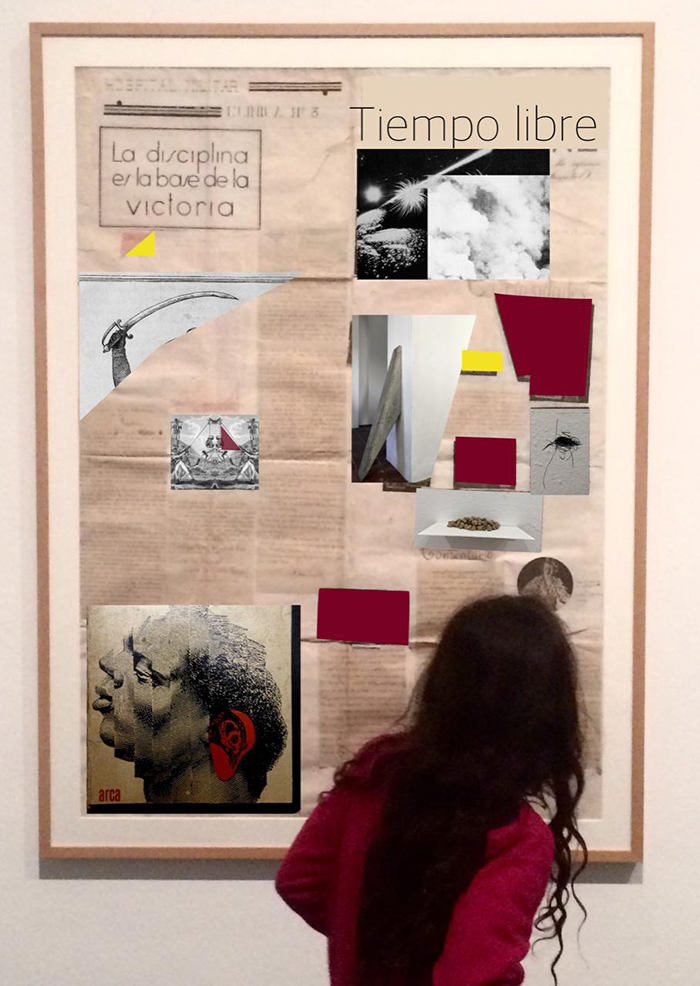
LA SOCIEDAD DEL TIEMPO LIBRE
A fleet will depart from Puerto Rico to join the Haitian Revolution. Like the objectives for the independence of Puerto Rico, the objectives of the Haitian Revolution goes on. The distance between centuries can be flexible where the Antillean project is both an end and a process. Our adversaries are still the same. We have been working together for years, rather than being a collective, we think collectively. This group is made up of MAOF (Diego de la Cruz and Gabriel Maldonado), Ramón Miranda Beltrán, Tony Cruz Pabón, Pablo Guardiola, and a Dominican reinforcement, Engel Leonardo. We make sculptures, drawings, we work with images, texts and experiment with materials. In addition to the experience of working together in
different scenarios, requesting our participation together facilitates access to resources in preparation for the trip, as well as for the eventual development of the works during the Biennial. Our participation is thought within the framework of a publication. We will develop an editorial exercise assembled in space, that will group a series of individual works, objects, ideas and forms. These works will have a minimum content of text, with many approaches to image making. This idea is a starting point, its final form will be
determined by being in Haiti.
Back to artist list
Ronaldo Duborgne (HT)
MAWONAJ ESKLAV
Aprè 1804 , se dat sa ki konsakre lè esklav yo te revòlte gn yn egzanp senbolik nan pòtoprens ki se estati Nèg mawon sou plas chandmas. Map gen o tex poum prezante pandan byenale a.
1804, was dedicated to the slaves rebellion. The statue of the Run-away Slave is a symbolic monument to this on Champs Mars, in Port-au-Prince. I will present a text about this during the biennale.
Back to artist list
Patrick Elie aka Kombatan (HT)
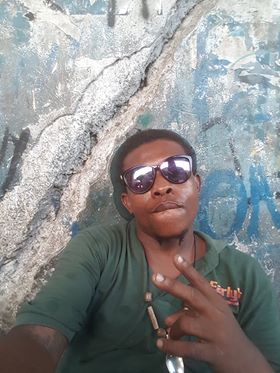
REVOLISYON
Tit project konbatan se révolisyon pou kominote à chanje map prezante evre mwen devant à telier m
Kombaton will make a work called REVOLUTION and exhibit it in front of his workshop.
Back to artist list
Sorrah ET (US)
NO ISLANDS
In their return to the Biennale after making a "Museum of the Future" in 2017, Sorrah ET and his team of Haitian authors, radio broadcasters, and filmmakers are creating "No Islands", a series of Afrofuturistic / alternately historical news segments focused on Haiti's role on the world stage.
Back to artist list
Cecilia Lisa Eliceche (AR) & Leandro Nerefuh (BR)
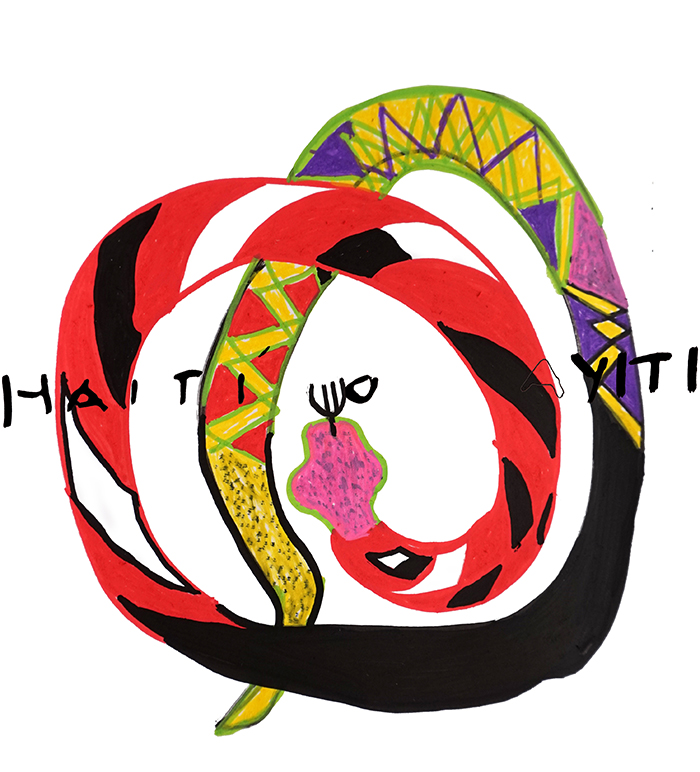
HAITI o AYITI
With the Haitian revolution, projects and fantasies of emancipation, dance, spirits and anticolonial resistance converged in one island. But the comprehensiveness of such imaginary resonates far and wide ever since (for those willing to listen). As South American artists, to consider the Haitian Revolution at this time and days, means to reconsider and to have faith in a transnational and radically heterogeneous cultural network that reflects a political imaginary of global reach and invests in reciprocal intercultural dialogues.
HAITI o AYITI will take the form of a choreographic experiment (with dance, food, sounds in an especially created environment) in homage to the riches of this territory and its history of resistance. Thinking of the geological and cosmic wealth of Haiti, the Caribbean, and Abya Yala or America. The lands, the waters, the basins, the depths, the underground, the air, the history of resistance, the dances and the spirits, the minerals, the waters, the snakes, a cobra grande. What is at the end of the rainbow? The rainbow, the waters of the sky, and the horizon of resistance against extractivism and water pollution. Abysmus Invocatia Abysmus.
Back to artist list
Alia Farid (KW/PR)
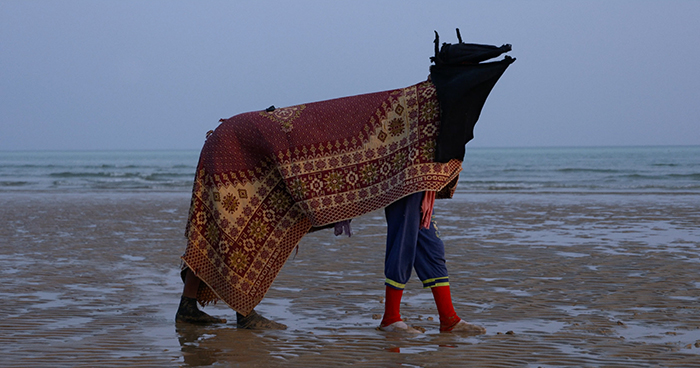
UNTITLED
Drawing upon Haiti’s carnival tradition, Alia will be organizing a costume making workshop and in culmination of the workshop, a football match during the 6th Ghetto Biennale, The Haitian Revolution & Beyond. The teams will be dressed as members of the various revolutionary stakeholders and the match will be held at the National Stadium.
Back to artist list
Catherine Feliz (US)
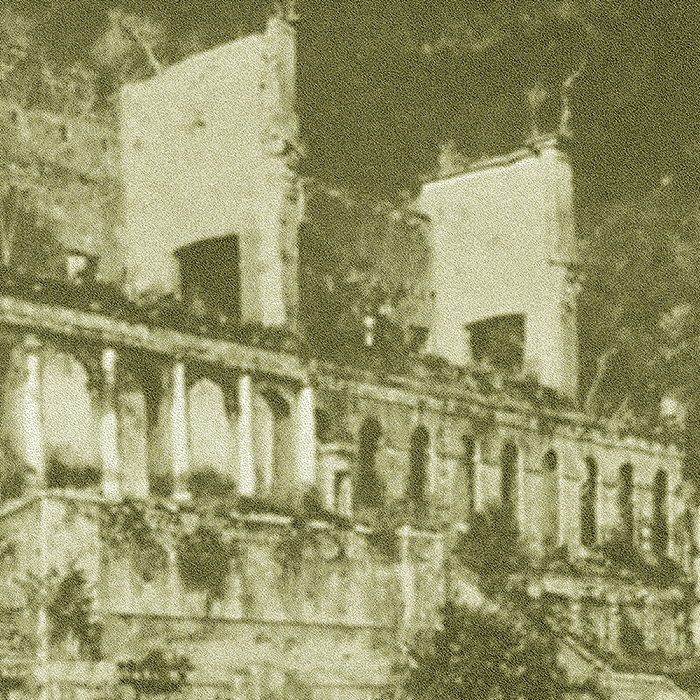
THE BANK OF REVOLUTIONARY SEEDS
At the intersection of minimalist sculpture, performance, and community archive, the bank will act as an archive of land memory that can be accessed to nurture the ongoing movement for liberation. The performance will ask for participants to tap into their embodiment, and intuitive wisdom to listen deeply before planting the seed. The building, shining gold like a beacon of light, will also continue to evolve and shift as people are drawn to the space, plant seeds, and our seeds inevitably sprout. With our bank deposits, we acknowledge that the Spirit of the Haitian Revolution continues to live on within the descendants of the freed slaves, the nations freed in the ‘New World’, and can be accessed everywhere that a spark of political change is lit.
Back to artist list
Guillermina De Ferrari (AR/US) & Reynier Leyva Novo (CU)
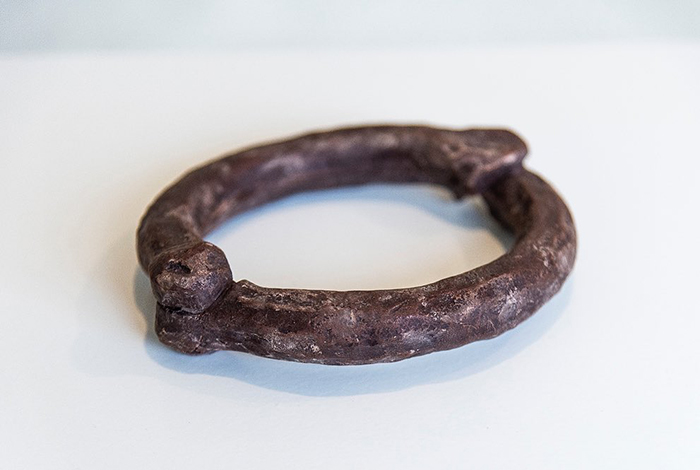
THE WEIGHT OF FREEDOM | GLOBAL ACTIVE DUST COLLECTION CENTRE
For the 2019 Ghetto Biennale, I am starting a “Global Active Dust Collection Center.” Inspired in the recent demonstrations against corruption in Port au Prince, this is a long-term project that consists of collecting the dust generated during social protests and mass demonstrations around the world. The vision is to present dust as a live and silent document of these protests.
The Ghetto Biennale is the trial run for this project, and I am now also engaging collaborators in Chile, Bolivia, Ecuador, Venezuela, Iran, Colombia and Hong Kong. My vision is to create collaborations with different “dust ambassadors” who manage the collection of dust in their own cities and record the relevant historical data.
Back to artist list
Charles Jerry (HT), Jean-Claude Saintilus (HT) ), Steevens Simeon (HT) ), Carima Neusser (SE), Olav Westphalen (SE) & Per Huttner (SE/FR)
THE REVOLUTION HUB | VISION FORUM
Vision Forum is a mobile laboratory, an open community and a platform for developing new forms and contexts to produce and present art. We work with professional artists in an expanded art field and most projects involve multiple producers, international networks and interdisciplinary collaborations. For the 6th Ghetto Biennale a group of Haitian, Swedish and French artists from visual art, dance, music, film, fashion and design will construct a hub in the Ghetto, called The Revolution Hub. This hub constitutes a platform for collaboration across genres.
THE REVOLUTION HUB carries out performative investigations and creates artistic performances. It is a place where artists bring ideas and where these can meet the local community and be moulded into performances. Together the participants will investigate the relationship between performance and revolutionary traditions. All revolutions have had a strong performative expressions and clearly defined aesthetics. Revolutionaries develop revolutionary music, visual art, choreographies and fashion to enthuse the people and impress its enemies. The Revolution Hub investigates how these traditions can be studied and used as platforms for new performances. It asks how revolutionary traditions can be used to create new artistic expressions practices that mould European and Haitian traditions into new mixes?
Back to artist list
Jean Frederic aka Wabba Upking (HT)
REV DESSALINES VER LA MERIK | DESSALINES’ DREAM SET AMERICA FREE
Konsep pwojet se fe ti moun jenn gran moun kompra empotans rev Dessaline nan nouvel sosyete a, paske li te gin yon bon model de revolition map prezante an penti sou twa fe de deba sou tablo ak tit REV DESSALINE VER L AMERIK.
The concept of the project is to make young people understand the importance of Dessalines in the today’s society, because the revolution is a good model. I will present three ideas on board with the title DESSALINES’ DREAM SET AMERICA FREE.
Back to artist list
Muscadin Fritzgerald (HT) & Ti Angelo (HT)
KÒ AK MO
Poezi ak dans kontanporen sou son ak music enstrimental ak yon grafiti nan perfomans epi anpil onomatopées sou vyolans kap fet nan pey a.
We will present poetry and contemporary dance with sound and instrumental music whilst creating graffiti and many onomatopoeia on the subject of the violence in the country.
Back to artist list
Jaime Gili (VE/UK)
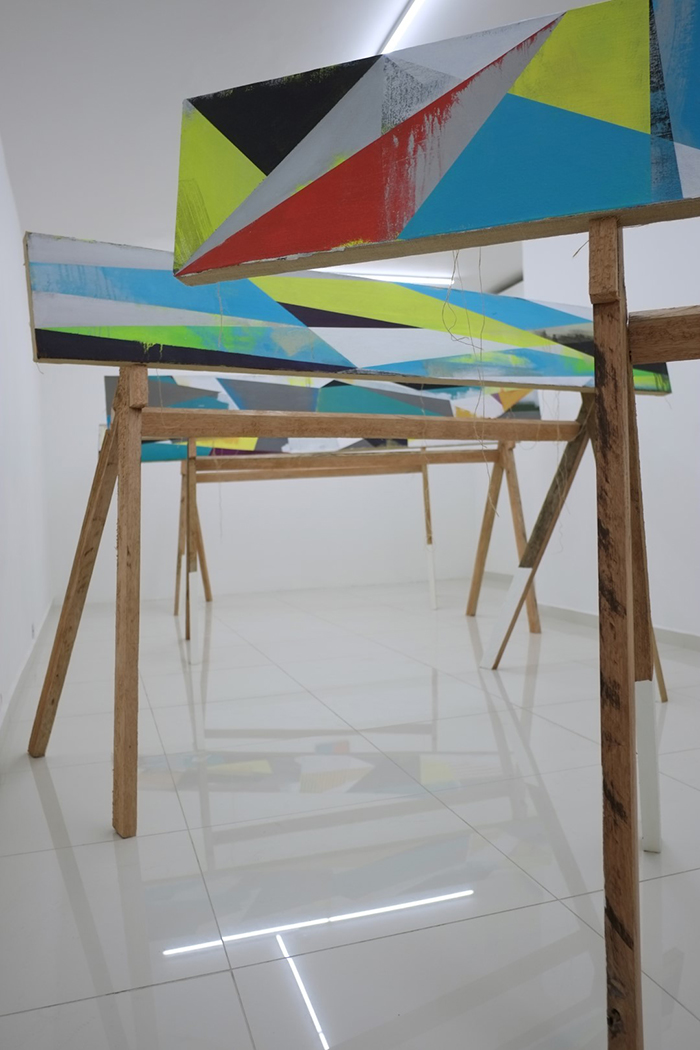
LOS CAYOS
Simon Bolívar’s final push for the independence of Venezuela in 1816 was only possible thanks to Haitian military help. Living in exile, and after even an assassination attempt in Jamaica, Bolívar travelled to meet Alexandre Pétion in 1815 and left for the South American continent with a few thousand soldiers and Haitian military support from the port of Les Cayes. Bolívar landed in Venezuela and immediately fulfilled the main promise made to Pétion in exchange for the help: to free the slaves of the Spanish Americas.
Nowadays Venezuela undoubtedly needs foreign help again, to free itself from the criminal gang –a network that includes some foreign forces too- and which controls the territory at present. Of course Haiti needs help too, and the complex global geopolitics, as well as the deadly simplification of everything into a binary game of sides, doesn’t help to understand the reality in the globe and in Venezuela, where today we live amidst a whirlpool of negligence, corruption, shortages, state violence, torture, disappearances and death. I know well the Dominican Republic, but not the Haitian part of the island. I would like to visit coastal areas in the south west, especially Les Cayes, and start working as collaboratively as possible, with the language and the idea of message in mind (messages that could float or fly, like a seed, a bottle, or a flag). Perhaps we will use drift wood, seeds, rubber or other elements to produce objects, very possibly painted objects, possibly with messages, calls -which may be easily understandable, or not. We must keep in mind I am an abstract painter who has worked –and is comfortable with- the inability of abstraction to deliver complex messages. The ideas of flotation, water, storage, container, travel, hiding, smuggling, escaping, helping, crossing, caring, will surely appear as part of the work. But the experience itself is what will bring out the final processes and its possible meanings.
Back to artist list
Laura Heyman (US)

REVOLUTION | REPEAT
The founding of Haiti as a nation is tightly bound with the founding of the Haitian military, whose history is one of repeated coup d’états. But the army that achieved Haiti’s independence is most often framed as a utopian people’s army that shifted over time to the enforcement arm of dictators, until it was disbanded by President Jean Bertrand Aristide in 1995. President Michel Martelly reinstated the Haitian Defense Force in 2010.
Using texts from Haitian government documents and quotes from military, state and militia movement leaders, Revolution/Repeat takes the form of printed information/propaganda. The pamphlet uses the rhetoric of military power embedded in public speech, discussions and documents of revolution to draw parallels between the reinstatement of the Haitian army and the rise of independent militias in the United States. Both movements use similar language to argue their necessity, commonly invoking their respective nation's historical revolutions to make the case for their existence. Revolution is by definition cyclical.
Back to artist list
Bertho Jean-Pierre (HT)
ESCLAVES ET REVOLTERS | SLAVES & REVOLUTIONARIES
A ceux qui cela concerne, je vous félicite pour vôtre initiative à compter de 2009 et à nos jours pour avoir donner aux artiste haïtiens la possibilité de travailler sur des thèmes spécifiques pour après d'exposer leurs travaux au grand public et de rencontrer à d'autres artiste étrangers pour qu'ils puissent avoir une horizon beaucoup plus larges. En ce sens, Moi. après avoir été sollicité par le centre d'art à participer au 5eme édition du Ghetto Biennale dans un projet titré ''pòtrè'' sous la direction de Sabrina GREIG.
cette année j'ai l'honneur d'être appliquer avec l'Artiste Reginald SENATUS (Redji) à la 6eme édition du Ghetto Biennale dans l'intension de réalisera un travaille qui titra: ESCLAVES ET REVOLTERS le travaille se réalisera dans un contexte socio-historique afin d'inviter les regardeurs a commémorer des dates ainsi que des héros, à poser des question , à comprendre , et à leur sensibiliser de sortir dans leur zone de confort, effacer de leur mémoires la séquelle de l'esclavage , fuis leur carcan jusqu' a ce qu'ils puissent révolter contre toutes les formes d'esclavages qui a nos jours continu à bafouer le doits humains. En résumé le travaille sera produit dans une méthode qui réunira des techniques comme '' collage , mixe-media, noir de fumer '' sur toiles. Tout en laissant la liberté à toutes stratégies d'exposition.
I congratulate you for your initiative from 2009 and nowadays for giving Haitian artists the opportunity to work on specific themes for later to expose their work to the general public and to meet with other foreign artist so that they can have a much wider horizon. This year I have the honor to be applied with the Artist Reginald SENATUS (Redji) at the 6th edition of the Ghetto Biennale to realise a work entitled, SLAVES AND REVOLTERS. The work will be realized in a socio-historic context to invite the viewers to commemorate dates and heroes, to ask questions, to understand, and to sensitize them to go out in their comfort zone, to erase from their memories the aftermath of slavery, flee their until they can revolt against all forms of slavery that today continues to flout human rights. In summary the work will be produced in a method that will bring together techniques such as collage, mix-media on canvas. While leaving freedom to all exposure strategies.
Back to artist list
Kwynn Simone Johnson (TT)
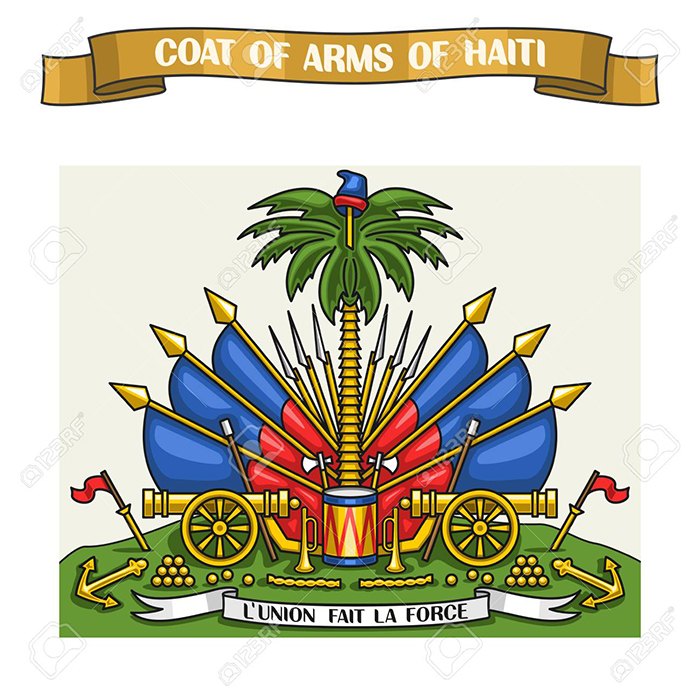
THE ROYAL PALM
This project uses the symbol of the National Tree of Haiti – The Royal Palm, as featured in the Coat of Arms, as a metaphor to visually probe another significant revolution - the one which brought down the Duvalier regime, and thereby placing 1804 in conversation with 1986.
Back to artist list
Louis Kervans (HT)
REVOLUSYON VODOU AYITI
Map fe yon pi gro penti sou revolusyon Vodou Ayiti
I will make a large scale painting on the Haitian Vodou Revolution.
Back to artist list
Ze Kielwagen (BR/US), Marcos Serafim (BR/US), Steevens Simeon (HT) & Samba Yonel (HT)
MASISI WOUJ
We will produce a short video inspired by the ongoing, everyday revolutions of Haitian LGBTs. Combining references from Vodou and drag, Masisi Wouj is a queer tribute to Ogou, the most revolutionary of the Lwa. The video will consist of three actions, enacted for the cameras by a Haitian performer. The resulting documentation will be exhibited on the biennale site as raw footage and/or prints. Post-production will follow in 2020, so that the finished piece may be screened as part of the 2021 biennale.
jkielwagen.blogspot.com
lecentredart.org
facebook.steevens.simeon
facebook.yonel.charles
Back to artist list
Piroska É. Kiss (HU)
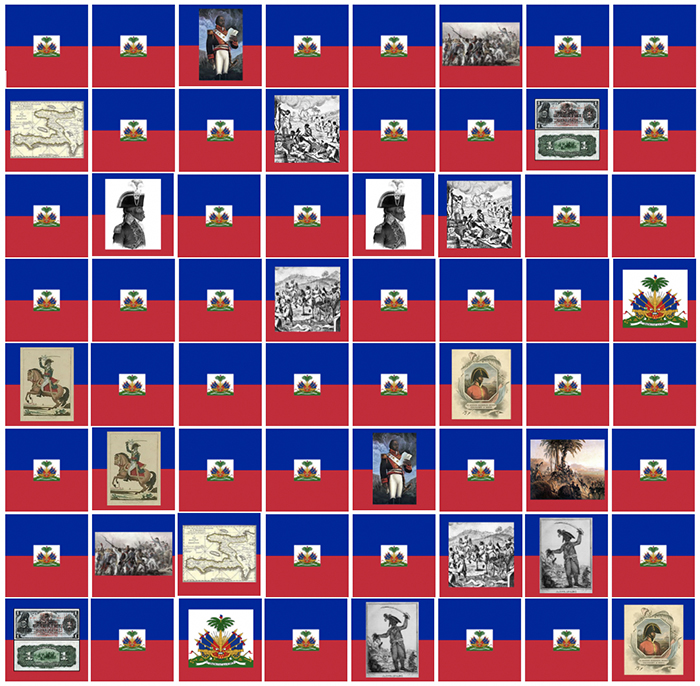
MEMORY OF HAITIAN REVOLUTION
A good way to learn much about the Haitian revolution and to memorize this knowledge is to play a game about the Haitian revolution. I envision a memory game where you need to match pairs of cards. Playing is very simple - you turn over one card and then try to find a matching card. There are 32 pairs of pictures about Haitian history, mostly the Haitian revolution. The background of all cards shows the colours of the Haitian flag and the back side of all cards is the Haitian flag. I plan to prepare a big size set of the memory game to be realized it in Port au Prince during the first days. Late, the participants can play with this memory set. An exciting party around a big table builds the community. I would like to print many pages with a small size version of this memory game for the children and adults who want to play at home. They can cut the cards, and then use the set.
Back to artist list
Katelyn Alexis (HT), Getho Jean Baptiste (HT), Wesner Bazile (HT), Noel Edgard aka Papoche (HT), Lee Lee (US), Mimi Sheller (US) & Moira Williams (US)
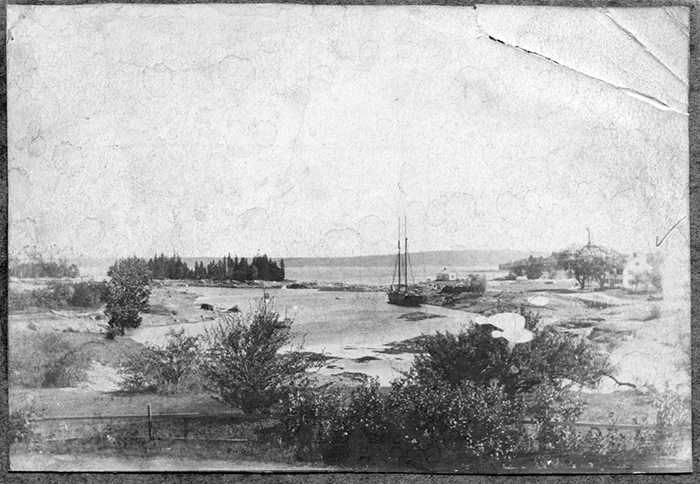
SEED MOUNTAIN BEYOND MOUNTAINS | RESTORATION LIBERATION
Exploring historic connections between Maine and Haiti, we will look at the entangled mobilities between plant-human and non-human relationships held sacred by indigenous communities. We will consider the role plants played through the Haitian revolution and how plant-based practices in both geographies may inform each other as we navigate our way through food sovereignty, sacred/medicinal relationships and rewilding efforts. We are interested in counterpractices that push against industrial agriculture and hybrid seeds.
virtualvoices.org
sheller.drexel.com
moira670.com
Back to artist list
Aristide Michelet (HT)
ATELIER DELIVRANCE NATIONAL ( ADN ) | NATIONAL DELIVERANCE WORKSHOP
Nou menm nan atelye a ane sa nou swete patisipe nan byenale a nou deside fè yn gwo ekspozisyon sou moniman esklavaj yo se ide sa nou pral devlope pou patisipasyon nou lokal nou se a kote simityè Pòtoprens.
We have decided to hold a exhibition on the monuments of slavery and this is the idea that we will develop for our participation near to the National Cemetery.
Back to artist list
Aurelien Moliere (HT)
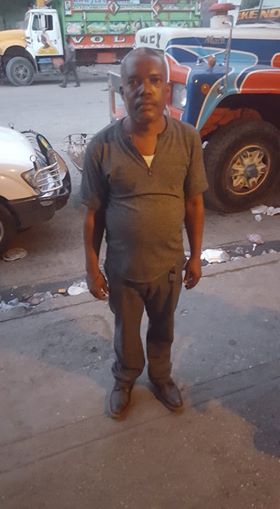
ESCLAV RÉVOLTE | SLAVES REVOLT
Sa se projet Aurelien Moliere esclav révolte nap mande ak komite ghetto biennale la poum prezante yon nan 6ème édisyon ghetto biennale ki pral ôganize la.
This project by Aurelien Moliere called SLAVES REVOLT will be presented at the Ghetto Biennale.
Back to artist list
Elena Montesinos (SP/CH) & Katelyn Alexis (HT)
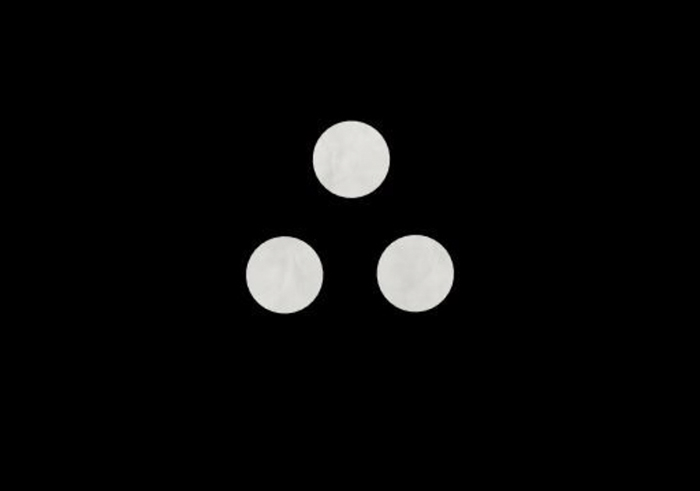
TI KOB GWAN LAJAN | SMALL MONEY BIG MONEY
Elena Montesinos most emblematic artworks and actions use money at the center of the action. Mixing the art of mosaic, voodoo symbols and street-art, TI KOB GWAN LAJAN (little coins, big money) will by playing around with the fascinating yet smalled-valued 50 centimes de Gourdes coin. The smallest currency in Haiti is curiously often to be found lying on the ground in the streets of Port-au-Prince and during her first stay she has been wondering about it, feeling curious and attracted by this particularity related to money in a place where money certainly doesn’t fall from the sky. that’s why she decided to come back and work around this interesting fact. During her stay, the artist will play around with this powerful symbol, adding a votive dimension to her singular "poetically protestive" artwork.
Back to artist list
Beatriz Santiago Munoz (PR)
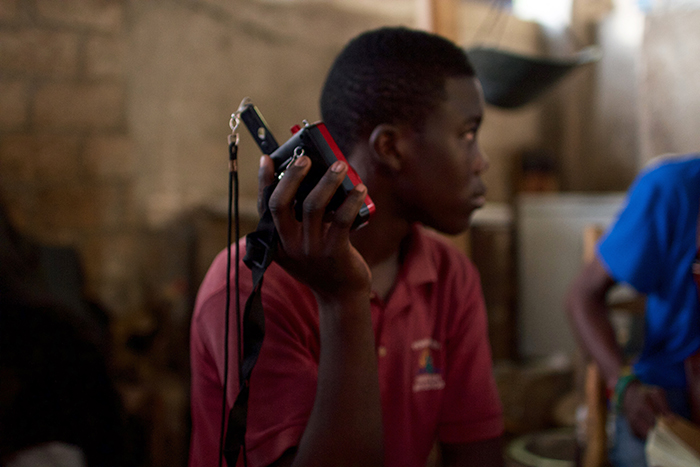
SUS ARMAS / THEIR WEAPONS
A film about the transformation of systems of thought through the exchange and movement of people and objects in the main markets of Potoprens.
Back to artist list
Keisha Oliver (UK/BS)
FUTUR FEMME
Futur Femme is a visual dialogue rooted in the historical significance and contemporary foreshadowing of the “Heroines of The Haitian Revolution". This project hopes to highlight women of this period like Dédée Bazile, Sanité Bélair, Marie-Louise Coidavid, Cécile Fatiman, Victoria Montou, and others who are worthy of tribute. The unearthing of their marginalized histories paired with a reimagining of eventual narratives will give voice, visibility, and validity to women of Haiti. Concerned with representation and community, the project uses popular culture and art activism as vehicles to educate and empower Haiti's youth. Futur Femme reconstructs feminine ideals and power structures through portraiture inspired by afrofuturism.
Back to artist list
Eliazar Ortiz (DO) & Yina Jiménez Suriel (DO)
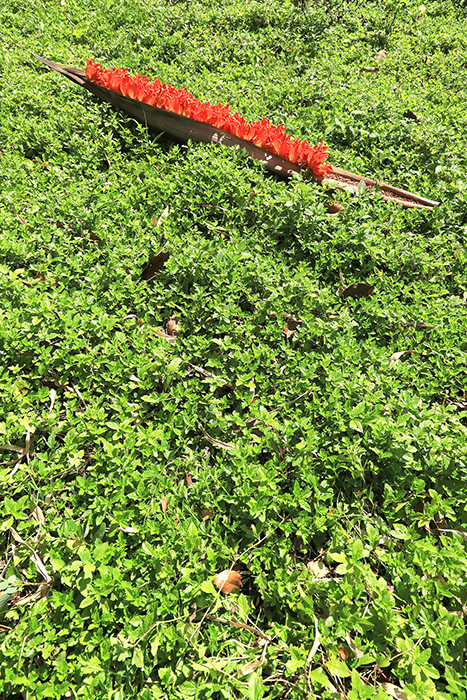
AREITO YAGUA KO
In this performance installation, I take as reference the "Areítos" of the Taíno mythology. In the action I carry some posters in a wheelbarrow, to later be stuck on a wall announcing a magical-collective choreography evoking a balance between nature and the human being. I reflect on the rhythm as movement-revolution and at the same time social reflection.
Back to artist list
Federic Post | Mos Espa (CH)
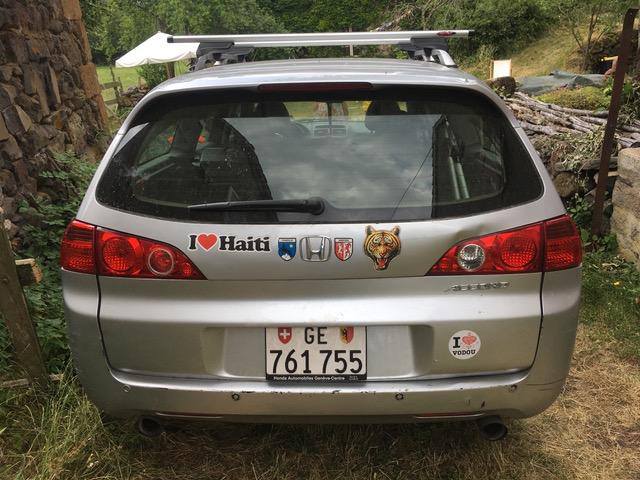
I <3 AYITI
2000 stickers and magical vibes for the revolution.
Back to artist list
Whitney Raynor (US) & Jacques Duffourc (US)
REBEL EPAULETTIQUETTE | STATELY FLAIR FOR DAILY MUTINIES
The symbolic value of epaulettes in Haitian Revolutionary lore is well documented, with accounts of single epaulettes being shot off during battle and torn off of the shoulders of opponents as an audacious challenge to claims of authority. For this project we will seek out potential collaborators among the local residents of the Grand Rue neighborhood as well as the visiting artists to help us imagine a historically-inspired future vision of revolutionary iconography and archetypal attributes. We will work alongside each collaborator with them goal of gaining a deeper understanding of how each person positions themselves within their own interpretation of the concept of revolution. After each of these exchanges we will create a custom set of wearable revolutionary accoutrements (epaulettes, bicorne hats, etc.) inspired by the conversation, using recycled and locally-sourced materials. This project aims to expand the vision of the quintessential revolutionary leader by highlighting everyday revolutionary actions and interactions. Drawing on historical iconography of revolutionary figures, the bricolage/found-object technique of many Grand Rue artists, and the carnivalesque costuming culture of New Orleans, our rebellious accessories will make tangible an array of the voices at work in constructing a collective vision of present-day revolutionary ideas and actions through ongoing dialogue.
Back to artist list
Olwitchneider Sainclair (HT)
BATAY AK SA'W GENYEN | FIGHT WITH WHAT YOU HAVE
Sin bliye kote'n sòti, lap difisil pou'n kon'n kote'n pwale’ pwovèb la pat di chak koukouj klere pou je'l. Men chak koukouj dwe klere pou yon lot. Istwa revolisyon'n rete mistè nan je lemond antyè. yo paka kwè premye pèp nwa ki te bay egzanp lendepandans ta kapab rive jounen jodi nan degradasyon sa. kote ensekirite la manjay,ensekirite poum moun viv tankou moun, se gwo pwoblèm pèp la ak konfonte depi aprè Elie lescot, paul Eugène magloire Durmasais estimé, kite diferan ak epòk kounya. Malgre epòk sa yo te toujou gen krim, men'l pa twò konsa, pwiske kounya chak ayisyen ap jere entèrè pa yo. yo pa ke genyen yon konsyans kolektiv kite bayo 1791 lan. Gran revòlt kote esklav yo te wè pat gen lòt fason pou yo te retire tet yo nan sa yo ye a, ke ini yo, idantifye pwen fò ak pwen komen yo, anplwaye pwòp estrateji yo,envante pwòp lang pa yo pou yo te ka mennen lit kont sistèm ki tap tou pizi nèg.
Batay ak sa'w genyen an son konpsèp ke'n ka enteprète, e twadwi atravè sa nou menm, nou idantifye ke'n genyen kò'm zouti manyèl e entèlektyè'l pou'n ta kapab fè yon lòt revolisyon swa mantal ou fizik. men'l te ka pran plis fò'm edikasyonèl ke repran'n istwa nou an 1804. nou bezwen alfabetizasyon pou pèp la, alfabetizayon pou leta kap dirije'n. e respè pou sa chak grenn moun itilize poul viv ki pap deranje sosyetel pou'l ranje pwòp tèt pal.
Batay ak sa'w genyen an vle di se ki sa ou genyen kòm zam, kòm zouti pou viv e pou ede peyiw, se nan optik sa pwojem nan pwal dewoule , sou yon konsyans kolektiv atravè tèks mizikal epi ekspoziyson ak kèk tablòm pentim melanje ak tèks pwezi ki pwal gide pwojè'm nan,ki se Batay ak sa'w genyen an pou pwojè sa map bezwen yon espas pou'm kapab enstale travay penti yo e kita ka sèvim kòm sèn'n kote mw pwal jwe aprè yon ti tan ekspozisyon zèv mw yo. map genyen ak mw yon tanbourinè ki ta va akonpanyem nan tèks mizik mw yo, ak on gitaris, e yon chantè pou'm ka delibere mesaj mw yo ak plis nanm.
‘If you forget where you came from it is difficult to know where you are going.’
This proverb is like a flash of lightning to my eyes. But every firefly must shine for another. The history of revolution remains a mystery to the eyes of the whole world. They cannot believe that the first black people who set an example of independence would be able to be living in this degradation today. Where the insecurity of food and the insecurity of people trying to live as humans, is the greatest problem of the people have confronted since the epoch of Elie Lescot and Paul Eugène Magloire Durmasais Estimé, different times than now. Sadly we have crime as every Haitian now manages their own interests. They have lost the collective consciousness of 1791 and the great riots where the slaves saw no other way to change their situation besides uniting themselves, identify their strengths, employing their own strategies, inventing their own language so that they could confront the system.
With the project FIGHT WITH WHAT YOU HAVE we will identify our intellectual tools for making another mental or physical revolution. It means identifying whatever you have as a weapon, as tools for living and assisting your country. It is in this vision that the project will unfold, on a collective consciousness through musical texts and exhibitions with some Veves mixed with poetry texts that will guide projects. For this project I will need a space to install the painting work and to serve as a stage where I will play after a short time exhibiting works. A drummer, a guitarist and a singer will accompany me in the texts of my music, so I can deliver my messages with maximum soul.
Back to artist list
Reginald Senatus (HT)
WALLS AND DOORS VERTIÈRES
Our ancestors revolted using all kinds of weapons and paid the price of blood for freedom by setting an example to humanity and that changed the world order of things at the time, the slave citizen. They have left us a land at the risk of their lives and we share it with other people (refugees) proof of humanist, Haiti land of freedom.
Haiti wrote one of the most beautiful pages in world history, its revolution for the abolition of slavery, and to reverse the inequality of this so-called human race, it was something that none of these slave-colonialists did not expect to see descendants of people of free Africa, who were enslaved for several centuries and suddenly decided to rebel, really it was not obvious, so this force the major is presented and they have seized and changed the situation, it was neither the luck nor the clemency of the metropolis but using all kinds of weapons at the cost of their lives, they bequeathed us this territory to guarantee our freedom, respect, a land of welcome for the homeless, a better life for the future generation, that was Haiti.
What do we the current generation feel that we are leaving for the future generations? Almost nothing ! We have fertile lands yet we do not plant anything, we do not consume any local food, we depend on the outside, our national currency depreciates and our purchasing power is deteriorating and it gets worse by the day, the earth warms up from more and more, erosion, deforestation, drought and plastic waste that is everywhere in the country where there should be sustainable and methodical solutions. So as a human being, as Haitians it is in our sacred duty to oppose this kind of drift here in Haiti and elsewhere, know that we will all die one day but what remained was the country whose family and culture are part of the whole.
To oppose all these tragedies, by responding to the theme of the 6th edition of the Ghetto Biennial of Port-au-Prince (the Haitian Revolution).
I propose to make a new artistic installation that will be Walls and Doors Vertières.
(Walls) = (MURS: To save what we have and block what could destroy us
(Doors) = (PORTES): To welcome positivity and to put the other way.
Vertières: the decisive battle to annihilate corruption, impunity, insalubrities, environmental problems, ecological, economic, child abuse, customs exemptions to the detriment of the weakest.
we must not be sheep in a slaughterhouse
so let's fight ....
Back to artist list
Wilerme Tegenis (HT)

CHÊNE TET ANSANM | CHAIN OF HEADS TOGETHER
Sa se project Wilerme Tegenis yon chêne tet ansanm ki banou révolisyon haïtien merci deskew à septe demande mwen.
This project will represent a chain of heads together that gave us the Haitian Revolution.
Back to artist list
Humberto Figueroa Torres (PR)
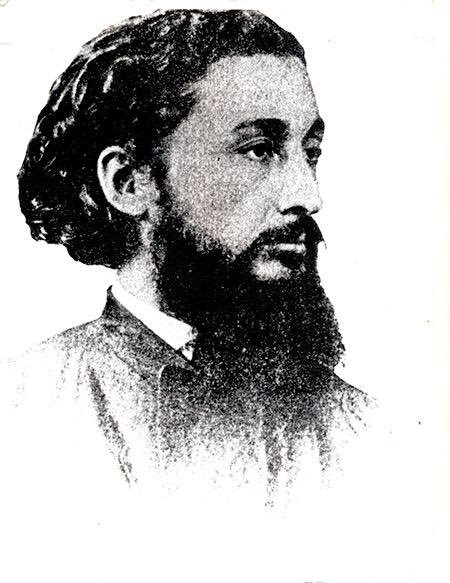
A GUIDE AND ROUTE TO LIBERTY AND INDEPENDENCE
A guide and route to liberty and Independence is the framework for the project by Puerto Rican artist Humberto Figueroa Torres. The immersion in Haiti for the 6th Ghetto Biennale will further his quest on the presence in Haiti of two Puerto Rican XIX century figures; Ramon Frade Leon painter and architect and anti-slavery intellectual Dr. Ramon E. Betances. Research on those Antillean figures contributions to Caribbean and Haitian political revolutionary discourses will intersect the concept of liberation as a spiritual and corporal process. A documentation in oral and graphic forms of botanical, organic, chemical materials used in religious rituals in Haiti and the Caribbean will lead to an installation and performance response. A liberation of the body, mind and spirit through ritual practices as means of a search for liberty and independence is at the core of the project.
Back to artist list
Pierre Valls (FR)
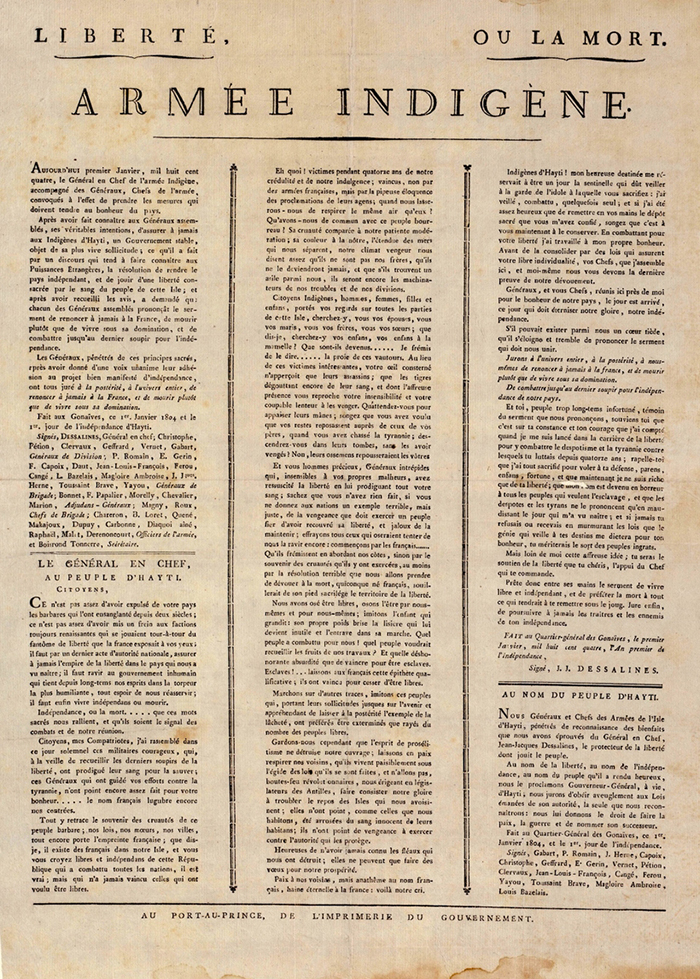
HAITI REVOLUTION SOUND BIKE
Haiti Revolution Sound Bike is a collaborative sound action proposal which seeks the creation of a sound archive. This archive will compile the sound footage of the reading of the Declaration of Independence of Haiti from 1804, previously recorded in collaboration with different haitians artist. This sound document wi 11 be reproduced throughout the city by a mobile sound sculpture, conformed by speakers attached to a bike structure. This action pretends to popularize the Declaration of Independence of 1804 to new generations. as a way to evoke an historic event which has been forgotten and ignored. As Borges says, "Human memory, so limited and prone the erosion of stored events, observes in oblivion its greatest threat, and in the distortion of what is remembered its greatest weakness". In this sense. HAITI REVOLUTION SOUND BIKE works as a memorial and resistance device against oblivion.